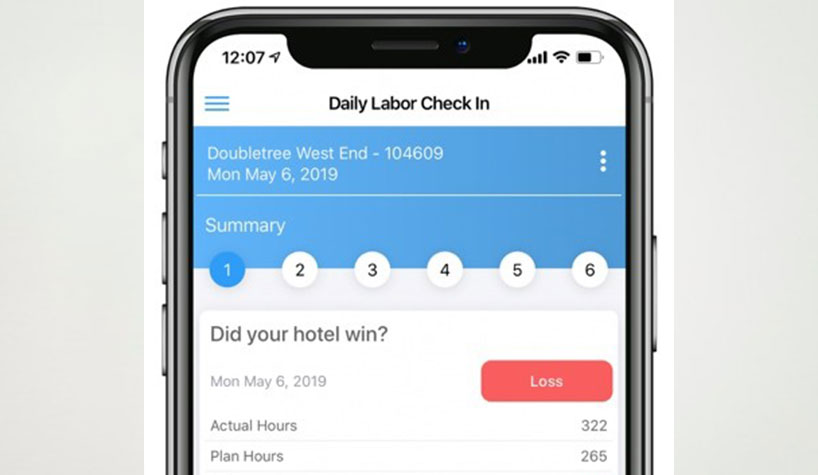NATIONAL REPORT—Increasing labor costs are an issue worth more than 40% of total operating expenses. The rise can be attributed to a few contributing factors, including overstaffing, overtime and contract labor, according to Del Ross, chief revenue officer, Hotel Effectiveness, a provider of labor management software for hotels.
“Rising wages are a driver of overall labor cost increases, but these are market driven,” said Ross. “A smart operator will monitor local wages to ensure that the compensation strategy is aligned to the market. However, overstaffing is very common in hotels. Well-run hotels often overstaff common positions such as housekeeping and front desk by 15-20%, meaning that more people are scheduled to work more hours than are actually needed. Hotels should use well-defined labor standards and forecasting to schedule exactly the number of hours and people needed to deliver the best guest experience at the lowest cost.”
Overtime is also rising along with the increased scarcity of available talent.
“Some overtime is ‘good’—if it comes with unanticipated revenues,” he said. “Most overtime is ‘junk’—the result of poor time management or negligent adherence to shift times when employees clock in and out for the day. Contract labor, like overtime, is simply necessary in a market with few available workers. Contract vendors must be managed closely and should schedule resources in compliance with the client hotel’s own labor standards and business needs. Many hotels only know how much they are spending on contract labor when they receive the monthly invoice from the contract provider.”
So, how did it all begin? According to Ben Vega, SVP of analytics and optimization, Remington Hotels, it stems from the historic low unemployment in the U.S., coupled with tighter immigration policies.
“It put a lot of pressure on wages over the last 18 months,” said Vega. “In general, we are having a tougher time filling positions and we are constantly evaluating our wage levels to ensure we are keeping up with the market.”
At the Hotel Data Conference in August in Nashville, TN, Vega demonstrated an approach to increasing operating profits by using advanced analytics combined with the Hotel Effectiveness’ labor management system.
Vega and his team at Remington were looking for a system to help standardize their scheduling process and manage productivity and overtime usage.
“The ultimate goal was to improve productivity of our most flexible positions, such as housekeeping, for example, and to reduce overtime,” said Vega. “Through our pilot with Hotel Effectiveness we were able to do just that. We saw clear evidence of productivity improvement and were able to avoid ‘junk overtime’ by identifying associates that were consistently clocking in/out a few minutes early/late.”
Vega added, “As wages continue to increase it is imperative to be as efficient as possible with labor. This starts by having well-defined productivity targets for each position, a robust scheduling process and way to track performance as what’s gets measured gets improved.”
Through the partnership with Remington, Hotel Effectiveness sought out to reduce the hotel management company’s labor costs in 2020 by $1 million to $3 million as a result of using Hotel Effectiveness solutions. Remington is set up to use the Hotel Effectiveness 5-minute Daily Labor Check-in as a part of each hotel’s daily manager meeting. According to Ross, this discipline will create an operating culture of labor efficiency and will ensure that all labor costs represent the optimum use of labor by every hotel.
Based on the analytics, some notable findings were:
- Housekeeping productivity represents a huge opportunity area. Minutes Per Room (MPR) is the key metric for measuring housekeeping productivity, and dropping clean times by a single minute per room can yield annual savings per hotel by $50,000-$80,000, depending upon the position and the market.
- Comparing position wage rates to the local market through the PerfectWage service can eliminate waste from overpayment and reduce turnover in situations where wages are significantly below market.
- Turnover is incredibly high in the industry. The most common positions, including housekeeping room attendants, guest service representatives and maintenance staff are seeing turnover at record levels—more than 160% per year in some cases. Competitive wages are part of the reason, but all of these things stem from workforce shortages. If a hotel has set their wage rates correctly but still experiences high turnover, the hotel should examine its management culture and other factors which may be causing people to leave for reasons other than income.
“We work with 4,000 hotels across the U.S. and Canada,” said Ross. “In every case, we are delivering reduced labor costs through added visibility alone. For the best performing hotels who follow all of the best practices, a labor cost reduction of 15% or more is not uncommon. Our technology makes it easy to identify and correct the factors that are creating inefficiency or overages. Because we designed the solution for busy, on-the-go frontline managers, achieving perfect labor costs that are aligned with the real drivers of the business requires almost no effort and actually frees up time for managers to focus on guest satisfaction, sales and overall quality.”
